My shopping cart
Your cart is currently empty.
Continue Shopping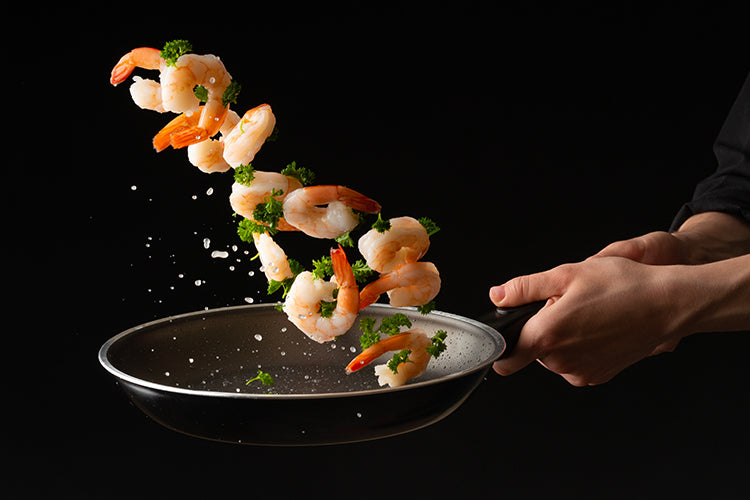
Stir-frying is a handy cooking technique that allows you to make quick and delicious meals and can be a great way to add variety to your diet.
The process involves searing meats, seafood, or vegetables in a very hot pan before adding them to a wok with other ingredients and cooking them over high heat until everything is done—usually within about five minutes.
Because of this, it helps ingredients stay crunchy, colorful and downright delicious. But have you got your technique down?
Watch out for these common mistakes if you want your stir-fries to taste great!

Make sure all of your ingredients are prepared before you start cooking because stir-frying is such a speedy method of cooking -- everything happens quickly, so if you need to slice or chop while cooking, your food will likely burn or become overcooked.
Ginger and garlic should be grated and crushed, and everything should be chopped before cooking.
You can save a lot of time by preparing your meat and vegetables beforehand.

Since high-heat cooking is a fundamental part of stir-frying, your ingredients should cook up quickly. If you want to make your cooking as convenient as possible, you should chop your vegetables into small pieces.
For some root vegetables, like carrots or turnips, par-cooking them by boiling or steaming is recommended. This will help the vegetables to maintain that crunchiness, but not be too raw. If you are including meat in your stir-fry, choose the right cuts.
Thin slices of meat will cook much quicker than thick pieces of steak. This will save you time and prevent uneven cooking and ensures that your dishes come out perfectly cooked every time.

The type of pan you use when cooking can make a huge difference to your meals. Do not use a non-nonstick skillet to stir-fry, as these pans, especially those coated with Teflon, should not be used over the high temperatures required for this method.
A wok is the best tool for stir-frying as its deep, sloping sides help concentrate the heat and cook food faster. Choose the largest stainless-steel pan you have if you do not own a wok. The food in a stir-fry needs to be shaken and tossed, so a wider pan is preferable to a deeper one.
The cast-iron skillet is not a good option since it is too heavy to shake and cook with while using it for a stir-fry, and you can’t cook properly without doing so.

Another mistake people make when stir-frying is not using high temperature. Usually, you should use a medium temperature for cooking, so that you do not burn your food.
But for stir-frying, you will need to cook ingredients relatively quickly using high heat. To begin, preheat your pan over a medium-high or high burner (depending on whether they are gas or electric).
Swirl in an oil with a high smoking temperature, twisting the pan to evenly coat it.
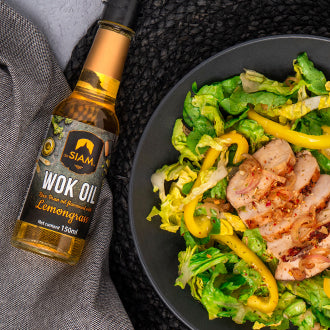
Adding cold oil to a hot wok will prevent sticking, but if you add oil to a cold wok, your ingredients might not cook through properly.
So ensure your wok is hot enough when adding cooking oil.
Because stir-frying is performed at high temperatures, it is essential to use an oil that can withstand the heat.
Choosing an oil that has a low smoke point, such as olive or sesame, would result in the oil smoking too soon, which would damage the oil's chemical structure and nutrients.
You should choose one with a high smoke point, such as canola, peanut, grapeseed, avocado, or rice bran oil. Afterwards, you may sprinkle sesame oil on the finished dish if you want to add some flavor.
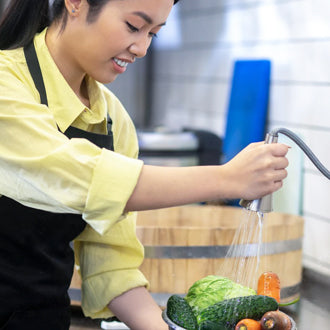
Keep your stir-fry dry until everything is cooked.
Wet vegetables and the extra water drop the temperature of your wok or skillet and can turn your stir-fry into a soupy braise, causing your veggies to lose their crunch and turn soggy.
After washing the vegetables, dry them thoroughly and do not add your sauce until the end, allowing enough time to heat through.
Another mistake a lot of people make when they’re stir-frying is crowding the pan with too many ingredients.
Adding everything at once into the wok results in an unevenly cooked stir-fry, as not all ingredients cook at the same rate.
It is best to add ingredients in stages, starting with protein (4-7 minutes), aromatics (1 minute), vegetables (1-7 minutes, depending on size and sturdiness), and sauce (1-7 minutes).
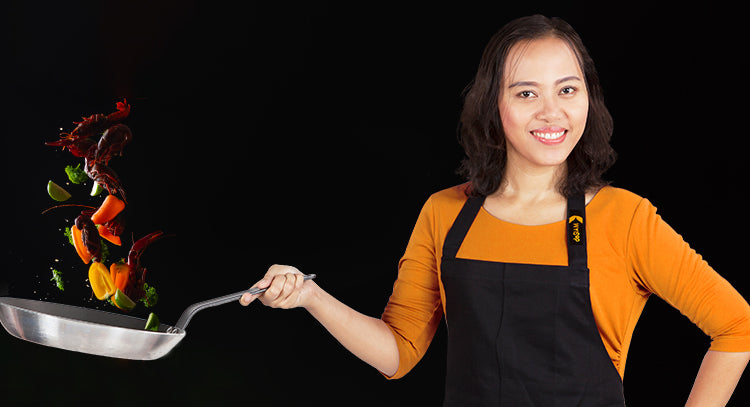
Categorize your vegetables into three groups: tough (carrots, broccoli, and cauliflower), medium-tough (green beans, snap peas, mushrooms, bell peppers, and zucchini), and tender leafy (spinach, bok choy, Napa cabbage, bean sprouts, and tomatoes).
Tough vegetables take the longest to cook so add them to the wok first, after cooking for a minute or two, add the medium-tough veggies, followed a minute later by the tender leafy vegetables.
Cut all of your vegetables in the same even size.
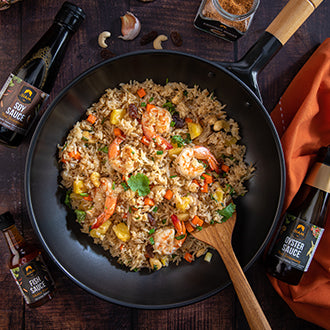
People usually season their food early and often when cooking, but that is a mistake when stir-frying. Salt tends to draw the moisture from your food, resulting in soggy, not crispy and golden-brown vegetables and gray, overcooked meat.
So this is a process where you should season close to the end. If you do not want your stir-fry to be bland, you can also enhance the flavor by adding wok sauce or utilizing ingredients like fresh chilies, Sriracha sauce, fresh lime juice, garlic, ginger, and lemongrass.
Or you can add a few drops of sesame oil, stock, wine, coconut milk, or beer. To achieve the greatest flavor, make sure your sauce is extremely concentrated and bold – you will often have juices and liquid coming out of the protein and/or vegetables anyway.